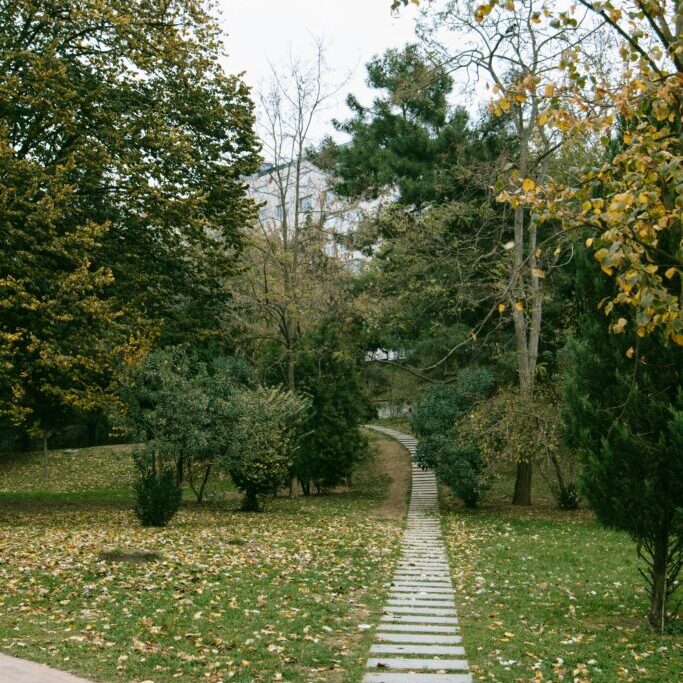
Enhancing Outdoor Spaces with Walkways and Pathways
Introduction
Walkways and pathways are essential elements in landscape design, providing both functionality and aesthetic appeal. They guide visitors through gardens, parks, and residential properties, enhancing the overall experience of the space. These structures can be crafted from various materials, each offering unique benefits and contributing to the ambiance of the environment. This article explores the different types of walkways and pathways, their materials, design considerations, and their impact on outdoor spaces.
Types of Walkways and Pathways
1. Garden Paths
Garden paths meander through landscapes, allowing visitors to explore and appreciate different plantings and features. These paths often have an organic, natural feel and can be made from materials like gravel, wood chips, or stepping stones.
2. Formal Walkways
Formal walkways are typically found in more structured gardens or entrance areas of homes. They have a clean, geometric design, often using materials like brick, pavers, or concrete. These walkways emphasize symmetry and order.
3. Nature Trails
Nature trails are designed to blend seamlessly with the natural environment. They are often found in parks and wildlife reserves, guiding visitors through forests, meadows, and along rivers. Materials like dirt, mulch, or crushed stone are common for these trails.
4. Driveway Paths
Driveway paths connect the street to a home's entrance or garage. They need to be durable and capable of withstanding vehicle traffic. Common materials include asphalt, concrete, and pavers.
Materials for Walkways and Pathways
1. Gravel
Gravel is an economical and versatile option for walkways. It provides good drainage, is easy to install, and comes in various colors and sizes. However, it can be challenging to walk on with high heels or wheeled devices like strollers.
2. Concrete
Concrete is durable, low-maintenance, and can be stamped or stained to mimic other materials. It is ideal for high-traffic areas and offers a sleek, modern look.
3. Pavers
Pavers are available in a wide range of shapes, colors, and textures. They are easy to install and repair and provide a classic, timeless appeal to walkways.
4. Brick
Brick walkways exude a traditional, historic charm. They are durable and can be arranged in various patterns. However, they can be more expensive than other materials and require a stable base to prevent shifting.
5. Natural Stone
Natural stone, such as flagstone or slate, offers a unique, organic look. Each stone is different, providing a one-of-a-kind appearance. Stone walkways are long-lasting but can be more expensive and challenging to install.
Design Considerations
1. Functionality
When designing a walkway or pathway, consider its primary function. Is it meant for leisurely strolls, guiding visitors, or connecting high-traffic areas? The purpose will influence the choice of materials, width, and design.
2. Aesthetics
The walkway should complement the overall design of the landscape. Consider the colors, textures, and patterns that will harmonize with the surroundings. For example, a rustic garden may benefit from a natural stone path, while a contemporary home might look best with sleek concrete walkways.
3. Accessibility
Ensure that walkways are accessible to everyone, including those with mobility issues. Paths should be wide enough for wheelchairs and strollers and have a smooth, even surface.
4. Maintenance
Different materials require varying levels of maintenance. Consider the long-term upkeep when choosing a material. For example, gravel may need periodic replenishing, while concrete might require occasional sealing.
Impact on Outdoor Spaces
Walkways and pathways significantly enhance outdoor spaces by providing structure and guiding movement. They can create a sense of flow and continuity, making large areas more navigable and inviting. Properly designed pathways can highlight key features of a garden or landscape, such as water features, sculptures, or beautiful plantings.
Moreover, well-constructed walkways increase the functionality of outdoor spaces, making them more usable and enjoyable year-round. They can also improve safety by providing clear, stable surfaces for walking, reducing the risk of trips and falls.
Conclusion
Walkways and pathways are vital components of landscape design, offering both practical benefits and aesthetic value. By carefully selecting materials and considering the design's functionality, accessibility, and maintenance, homeowners and landscape designers can create beautiful, enduring paths that enhance any outdoor space. Whether leading through a lush garden, connecting home to street, or winding through natural landscapes, well-designed walkways and pathways enrich our interaction with the environment.
